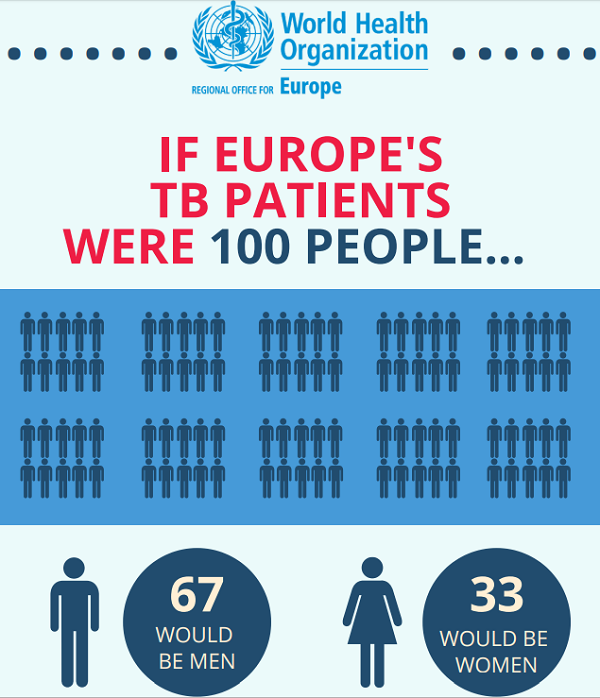Basic facts on tuberculosis (TB) in the WHO European Region
In 2015 alone, there were 32 000 estimated deaths from tuberculosis (TB) and around 323 000 new TB cases. This means that every day, about 900 people become sick with TB.
Countries in the eastern part of the WHO European Region are most affected by the TB epidemic: 18 high-priority countries for TB control bear 85% of the TB burden and 99% of the multidrug-resistant TB (MDR-TB) burden (Armenia, Azerbaijan, Belarus, Bulgaria, Estonia, Georgia, Kazakhstan, Kyrgyzstan, Latvia, Lithuania, the Republic of Moldova, Romania, the Russian Federation, Tajikistan, Turkey, Turkmenistan, Ukraine and Uzbekistan).
Although the number of cases in the Region as a whole halved in 2006–2015, the number of new TB cases was almost 8 times higher in high-TB-priority countries than in the rest of the Region.
TB incidence in the Region is among the lowest in the world, but the Region’s burden of MDR-TB is the highest. MDR-TB is one of the key drivers of the TB epidemic in Europe, along with HIV, social determinants and TB risk factors, and limited capacity of health systems.




